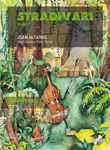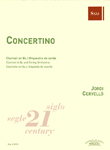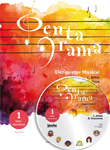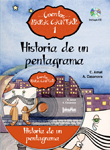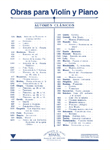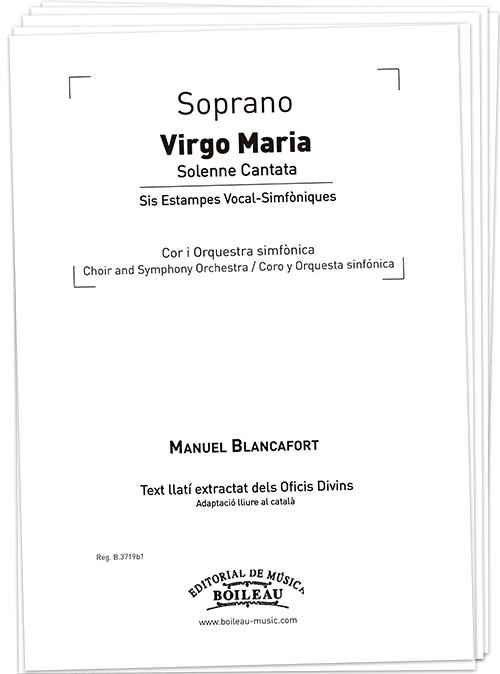Virgo Maria (x10) Soprano
Particella para soprano en coro mixto
Coro mixto y Orquesta sinfónica
BLANCAFORT, ManuelReg.: B.3719b1
51,00 €
P.V.P. (VAT included 4%)
Add to cart
- Ensemble: Symphonic orchestra: With voice/choir.
Choir: With accompaniment; Mixt. - Genres: Classical / contemporary: Choir; Symphonic.
- Lyric author: LITÚRGICO
- Language: Cat/Llatí
- Product format: Particellas
- Difficulty level: Advanced-superior
- Period: 2nd half S. XX - XXI
- Publishing house: Editorial Boileau
- Collection: Siglo XXI
- No. of pages: 20x10
- Measure: 31,00 x 23,00 cm
- Lenght: 58'28"
- ISMN: 979-0-3503-4344-5
- Available in digital: No
- Available for rent: No
PACK OF 10 PARTS FOR SOPRANO
Along with Mompou, Gerhard and Toldrà, Manuel Blancafort was one of the most active composers of the so-called “Generación de los 20”. The composers who formed this group considered music not only as a profession but also as a cultural necessity with profound connections to the issues of the era. Of these composers, Blancafort was probably the one who was most concerned with joining together a hedonistic enjoyment of music with a rigorous formal structure to produce “music that can stand on its own feet”.
Solenne Cantata Virgo Maria [ Solemn Cantata Virgin Mary] (1965) is probably one of Blancafort’s most ambitious due to its scope, formal construction and format. The following text about the cantata was written by Blancafort for the Guía Musical published March 8, 1968:
“Here are a few words about the creation of the cantata Virgin Mary: For many years I had wanted to compose a religious work, but I had always waited until I felt more prepared and certain of what I wanted to do. It needed to be a larger work than any of my other compositions and I also wanted to compose a song of praise and thanks to God for the gift of music. Since it was essential for me that it be a vocal work I had to find a text that was went along with my point of view. I was not able to find an appropriate text until some years had passed and suddenly the problem was solved—the text would be a selection of verses of the Devine Hours for the most important festivals honoring the Virgin Mary. The episodes that the liturgy commemorated offered me an ideal poem for a cantata. There are six contrasting scenes related to the Virgin Mary such as the poetic dialogue between Gabriel and Mary, the happiness of Bethlehem, the intense pain of Calvary and the triumphant exaltation of the Ascension. In the middle there is also an evocation of the flight to Egypt (music without words). This was the project.
As for the music, the first condition was for me to see how I would be able to achieve unity in a work of such length which at the same time had to pass through periods of highly diverse expression. It was not possible to use a melody that would keep reappearing. Neither a leitmotiv nor use of cyclical form was adequate. The homogeneity of the work would depend on how well I would be able to unify the general expression while taking care to highlight the length and dynamic of each movement and bringing together the moments of maximum tension in the text with the musical climaxes. And, keeping all of that within utmost unity of style”.
As he stated in an interview in 1965, Blancafort had been working on the cantata for more than 10 years, although he had been thinking about it for most of his life. However, the work was completed in his maturity, an era which many of his contemporaries considered as being “too formalist”. Nevertheless, Virgo Maria was valued for its quality. It is a work for more than 100 singers and large symphonic orchestra with harp, piano, celeste and percussion. In 1965 it was awarded the First Prize in a contest organized by the Orfeó Català. Members of the jury were: Joan Massià, Frederic Mompou, Xavier Montsalvatge, Rafael Subirachs and Lluís M. Millet.
This Cantata, which is more than 45 minutes long, was premiered on March 8, 1968 by the Orfeó and the Orquesta Ciudad de Barcelona, directed by Lluís M. Millet. The premiere received high praise by such critics as Menéndez Aleixandre writing in La Prensa, March 11, 1968: “This is a work by a great master of how to compose for large chorus and orchestra”. Montsalvatge also wrote: “In each movement he has given us him most intimate religious thoughts and feelings as well as demonstrating his complete lack of rhetoric and grandiloquence”. In spite of the success of the premiere since 1968 it has not been performed again, in part due to the fact that the work was only available in manuscript.
The composer himself made a reduction of the score for chorus and piano which is also published by Editorial de Música Boileau. The work is dedicated to the daughter of Oriol Martorell, Maria de la Mercè Martorell, a Sister of the Sacred Heart.

